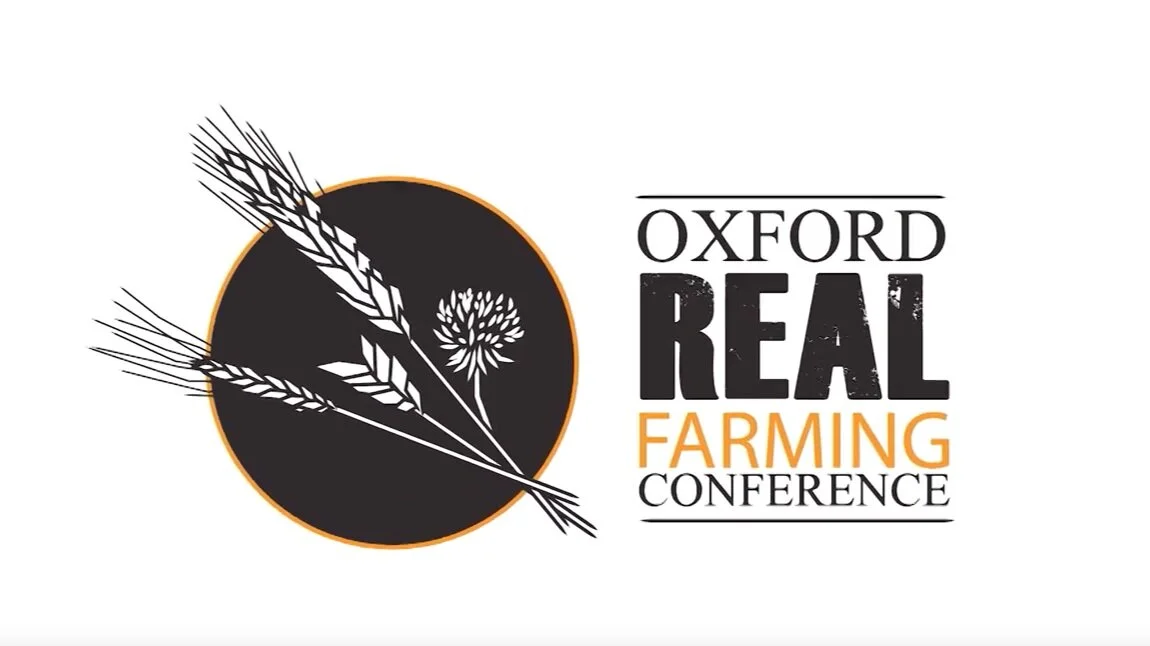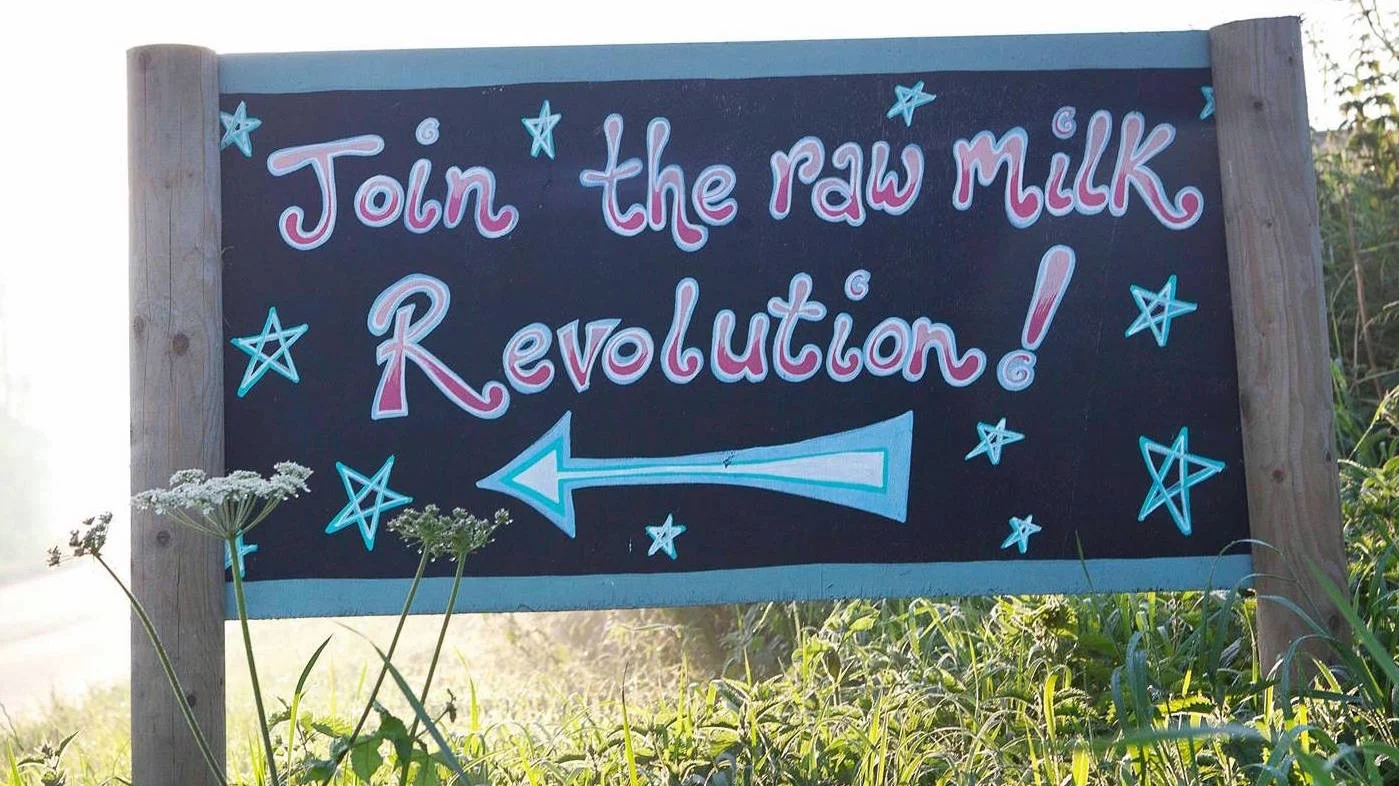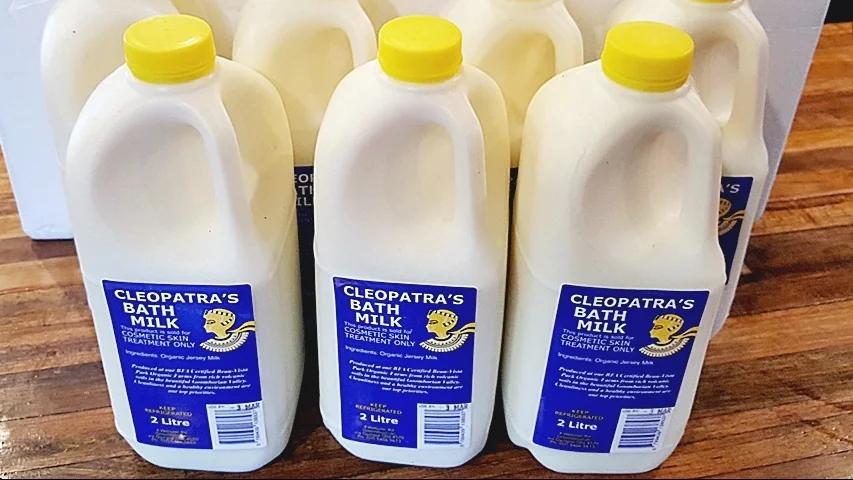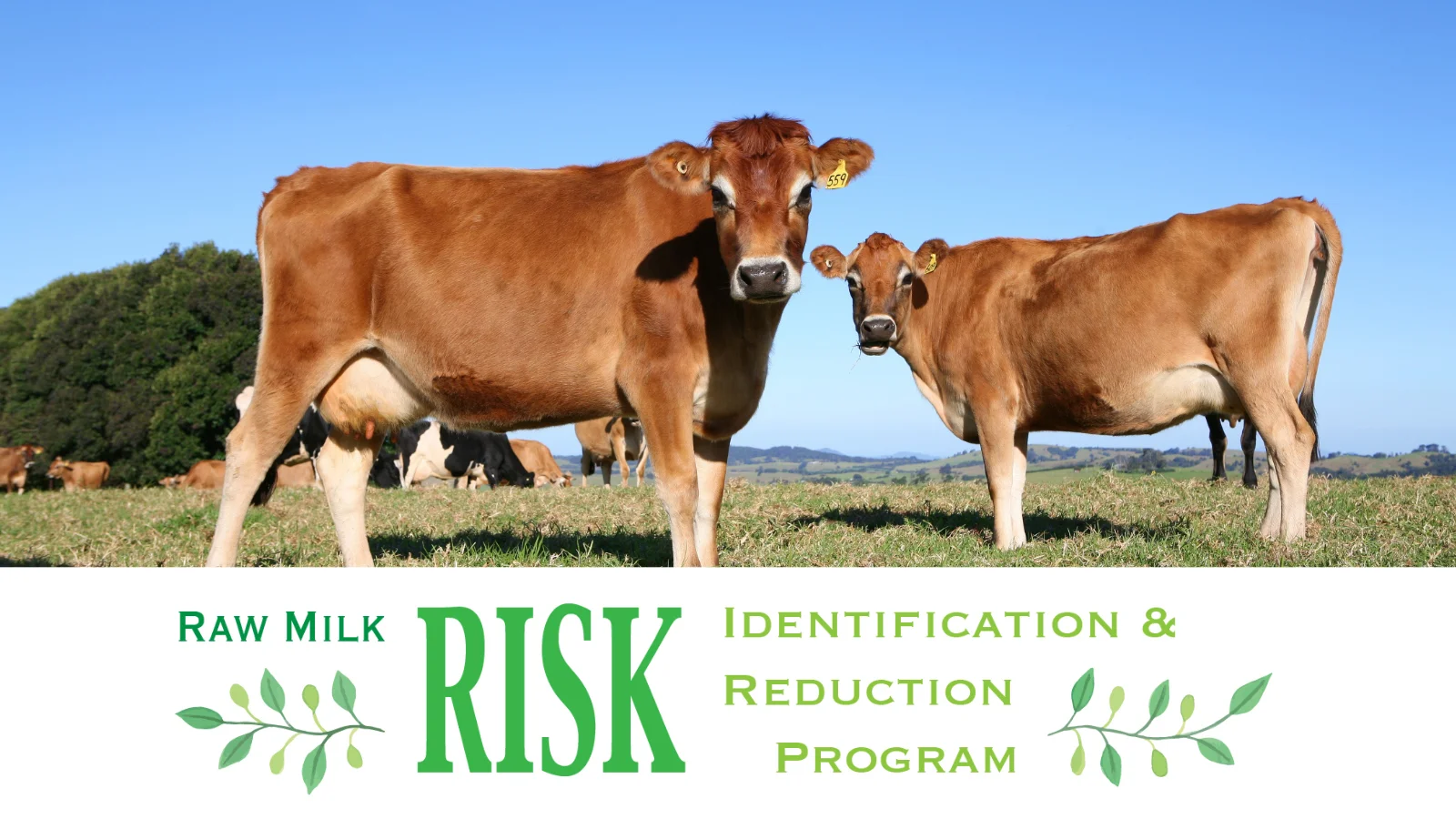This subject has been shrouded in enigma in Australia for more than a decade, and is up for discussion again, because of a thesis that was published earlier this month.
‘Bath milk’ is a very complicated issue in Australia, with many factors involved, and listing them all in this article would not be possible. There has been a love/hate relationship with this product for more than a decade. Some Australians love it, with reason, and some seem to hate it, with reason. It is truely puzzling that this product can still be for sale (in some Australian states) in such a risk-averse country like Australia. Yet, if you look world-wide, ‘bath milk’ may have originated as a mechanism or loophole through which consumers could obtain a high-value, in-demand product somewhat under the radar, without rousing the anger of big milk processors who want to protect the public image of their processed products in the marketplace.
According to this article, the Australian dairy industry was de-regulated in July 2000 but some aspects were overlooked, including the mandate that all farm milk must be pasteurised before processing. This regulation was originally included for the financial benefit of the dairy industry. In 2015, a change was made to allow raw milk cheese production to restart in Australia after two decades of being banned. It is now time to modernise the regulations to allow the sale of regulated raw drinking milk from cows in Australia.
Why should the processed dairy industry continue to enjoy a monopoly on raw milk from cows, when the large commercial system is disintegrating, due to low milk prices paid to farmers, rising production cost, the drought, high feed prices, global oversupply and declining local consumer interest? Many farmers are failing or going bankrupt. They cannot diversify, because of this system that some believed needed protections long ago.
The dynamics surrounding ‘bath milk’ are very hard to write about, and complicated, which is why few have attempted it…
It is by no means certain that readers will understand all of the details in this article. Perhaps the key to understanding is paying attention to the words intention, intended and meant where they appear.
Through the years, the various products intended for bathing or beauty care, like milk, cream and yogurt have carried labelling informing for those who purchased it. The labelling either states that “this product is sold for cosmetic skin treatment only” or wording similar to ”not intended for human consumption”. But this is a farse. Can anyone really prevent people from consuming ‘bath milk’, if they decided to? The answer is no.
This discussion shows just how fragile the foundation of the raw milk movement in Australia really is, which is alarming. Many are depending on a product that has a weak foundation, because it is the only kind of raw milk from cows some can access. Raw goat milk is legal in four Australian states, but there are only a few producers selling it.
By letting the tears fall, around potentially losing access to this product intended for bathing and beauty care, we may open pathways for the appropriate quality controls to be installed in a transparent regulated system for raw cow’s milk. How can a fair and caring resolution for all be achieved if someone doesn’t shine a light on this situation and its complexities? It's important to evaluate the cost and pain to all parties, and surrender to the fact that we don’t know how this will unravel. This article is an attempt to gently help people consider and reach spiritual understanding. It’s an opportunity to learn and grow. There are people involved in this situation that need to be treated fairly. It’s time to be honest, caring and responsible for the choices that has been made, and how we move into the future.
An Australian thesis on ‘bath milk’
A Twitter post, alerted us to the fact that a thesis was recently published online. On the 13th of November 2018, Professor Kate Seear from Monash Law School congratulated her student, Alanna Linn, on passing her thesis with flying colours, and having published her first ever publication (on raw milk regulation). According to this entry on ScienceDirect, it is titled: Making milk with conscious care: Raw milk ontologies and the practices of ‘bath milk’ producers in Victoria, Australia.
Here are the highlights:
Production of bath milk occurs in a number of countries where raw drinking milk is prohibited.
Accounts of bath milk producers, who reject the definition of raw milk as inherently dangerous, are under-explored.
These producers have developed their own structured practices to produce an alternative versions of raw milk and risk.
Food safety regulation has been unable to engage with such alternative, and more complex, versions of food and risk.
To get access to the whole PDF document on ScienceDirect, the website asks you to create a log-in, and agree to Terms and Conditions. After a closer inspection of the terms and conditions, the author of this article decided not to obtain the whole thesis for reading, and continued to write this article instead. The reader of this article, however, may like to obtain the PDF document, click here to read more…
Facing the Shadow and the Enigma of ‘bath milk’
It is very challenging to understand how Australian authorities manage ‘bath milk’, because where can we go learn about the anatomy of the system or how it operates? Is there a system written down on a government website somewhere that can be accessed? How does the law operate surrounding ‘bath milk’?
For ‘bath milk’ to have operated for more than a decade in some states, someone must have considered the way it was handled as a manageable risk.
The dynamics behind allowing ‘bath milk’ in some Australian states are an enigma to most people. It’s a topic heavily shrouded in mystery. Was it designed to have an aura of secrecy so it can operate somewhat under the radar? Or is it an open secret? An open secret is a concept
or idea that may be known in certain circles, but which none of the people most intimately concerned are wiling to acknowledge in public. As long as an issue is shrouded in enigma, it guarantees that people will be unable to understand it, or act on it.
The mysterious details, the lack of knowledge and the anxiety around the situation is problematic.
Those who choose to consume the product don’t really know what goes into its production, or what testing procedures were followed.
People may be able to contact the ‘bath milk’ producer and ask questions, but the producer may not have the time, or the willpower to explain all the details involved. Dairy farmers in Australia are generally busy, time poor people.
There are some ‘bath milk’ producers in Australia who have an intimate knowledge of how raw milk from cows can be produced as a low-risk food. Surely there must be some of the right controls in place, at some of these farms, in order to have had this product for sale in Australia for all these years? In Victoria, bath milk was for sale for around 10 years from various producers until the end of 2014. ARMM estimates that weekly sales of ‘bath milk’ in Victoria stood at about 17,000 litres per week in 2014. A small group of dairy farmers supplied that market, carefully monitoring the quality of their milk. In some other Australian states, it has been available for more than a decade.
A love / hate relationship with raw milk in Australia
Many authorities in Australia look at ‘bath milk’ with an unfriendly eye. The Victorian government reacted to the ‘killer milk’ media frenzy, started on 10 December 2014 by The Herald Sun, by giving directives just a few days after Christmas, to prevent the consumption of all ‘bath milk’ in Victoria. New regulation dictated that from 1 February 2015, a bitter gagging agent must be a compulsory ingredient in all raw milk intended for sale. Only people who own a cow can legally drink its raw milk in Victoria.
In 2017, a NSW dairy farmer Julia McKay was charged relating to the sale of raw milk. Julia operated a herd sharing arrangement whereby a person enters into a contract and purchase shares in a herd or individual cow and consequently receives raw milk produced by that herd. The NSW Food Authority called her conviction a ‘sweet success for food safety’, and has on other occasions in the media also made hostile comments about ‘bath milk’. Pressure from the South Australian Health Department and the media also shut down Mark and Helen Tyler’s herd sharing arrangement. Moo View Dairy in South Australia had been supplying raw cow's milk for up to 600 families for 17 years, but was banned from supplying in July 2017.
On the opposite side, we have consumers who want to purchase raw milk from cows, and the only available option in Australia for many is ‘bath milk’. Swampy Marsh, a well know raw milk supplier, sold ‘bath milk’ around Victoria and Melbourne at farmers markets for 20 years, according to this news report. He no longer sells, due to Victorian regulation.
According to a 2016 open letter, most of Australia's 6000 dairy farmers and their families drank raw milk without health problems. The logic of this comment can be understood if you consider the following information: “the Australian dairy industry is recognised worldwide for its high quality dairy products—clean, green and safe. This stems from a long history of committed dairy farming family businesses focused on producing the highest quality raw milk from healthy cows grazing pasture, supported by world first technologies from organisations like CSIRO, and all backed up by high quality regulation.”
The industrial dairy industry, however, has changed somewhat in recent years as more feedlot dairies now operate, feeding large amounts of grain and mixed feed. More dairies are also feeding strange feeds, like food waste and spent brewers grain to dairy cows, because of the drought. Some of these newly introduced feeds can pass microbial dangers to the raw milk, because pathogens can grow in the rumen of the animal and via its faecal matter, contaminate the environment around it. It’s no longer obvious if the raw milk that farmers produce for the processed dairy industry, can be consumed raw (pre-pasteurised) by the farming family without problems, unless it is tested. Remember that the intention during the production of raw milk meant for the pasteuriser, is that it would undergo a heat treatment, which is expected to kill potentially present harmful organisms in the milk, before being packaged and presented for consumption.
Some systems around raw drinking milk (RDM) intended for human consumption overseas, now show that there are potential pitfalls system architects and raw dairy farmers may not be aware of. It affects those who don’t understand that industrial dairy feeds and practices can pose risks to the food safety of RDM. It’s up to the system architects to make sure the right controls are installed in a RDM system, because if this is in place, farmers are going to produce a great quality, safe product. If this is neglected, there may be more incidence of contamination, and the dairy farmer is not likely to understand what he/she is doing wrong. It is vital that dairy farmers learn how to grow a large mass of nutrient dense forage to increase the food safety of the raw milk.
Is the reader still following? There is a lot of information that may be challenging to understand, especially for those who do not have intimate knowledge on these topics. It can be very confusing, which is why the Raw Milk Institute is like a breath of fresh air… Keep reading…
The RAWMI factor
The creation of the Raw Milk Institute (RAWMI) in 2010 may have contributed to the longevity of ‘bath milk’ in Australia. RAWMI produced raw milk food safety standards, farmer education and farmer-to-farmer mentoring to help get farmers on track. They have developed a food safety plan with a now 11 year track record, that is used all over the world in countries like Italy and France, and according to chairman Mark McAfee, even in Australia…
It shows that raw milk can be produced as a low risk, pathogen-free safe food.
In the early days in North America, many consumers were searching for farmers who could supply unprocessed, clean raw milk. In the search consumers became confused, because most farmers lacked knowledge and education, and had little guidance on how to produce the low risk, pathogen-free raw milk consumers were looking for.
Before RAWMI came into existence, farmers knew a lot about industrial dairy, but not about producing raw milk for human consumption.
They are two different products, with different sets of standards and different values.
That is the reason why there were some outbreaks of illness linked to raw milk consumption in the early days of the raw milk movement. Thanks to RAWMI, individuals like farmers, consumers, regulators and legislators now enjoy having access to testing systems, expanded knowledge of biology, experience and a track record. There is transparency, with test results and food safety plans openly shared on a website for anyone to access. In the raw milk movement there is an understanding now that there are two kinds of raw milk: one intended to be pasteurised, and the other produced and meant for human consumption.
Potential problems in continuing with ‘bath milk’ in Australia
The farmers producing ‘bath milk’ likely fear losing their livelihoods. ‘Bath milk’ currently sells for up to $13 for a 2 litre bottle. It’s profitable. If a situation occurred where the ‘bath milk’ was linked to a food poisoning incident, the media may decide to go into a shaming frenzy, poisoning people’s minds by creating prejudice. No dairy farmer wants to be shamed in the public arena. They are often by nature proud and honest people.
From responses on our social media pages, it is fair to deduct that many consumers of ‘bath milk’ also fear losing a product that is very important to them. It was an extremely traumatic experience for many Victorians to lose access to bath milk in 2015. Even to this day, raw milk supporters describe on our social media pages how they miss it.
Raw ‘bath milk’ in its current form is not a healthy ‘system’, if it can be called that. It is not showing kindness to farmers or consumers who want to participate in the raw milk movement. Rather, it is a stalemate. It shows the unkindness of system architects, legislators, regulators, government, industry, health departments and other authorities. Supermarket giants may also desire to keep the status quo in place, because their loss leader $1 milk is luring customers to their stores. If consumers go to the farmer instead for a high value product, they may also buy other products from the farmer instead. From a certain point of view, this ‘bath milk’ situation is a form of control and stranglehold. It is keeping the small-scale farmer, who some see as the competition, at bay with a potentially paralysing set of circumstances.
Farmers and consumers don’t want to be prosecuted. What protections do farmers or consumers really have who are invested in ‘bath milk’? Is wording on the label like “not intended for human consumption” really sufficient protection for the vulnerable dairy farmer? Production standards, as part of a regulated industry, means there are proper testing protocol, enabling the raw milk producer to show evidence that their milk is not to blame. Regulating the industry with world best practice standards like that of RAWMI, can offer many worthwhile protections for farmers and consumers. Raw milk regulation can result in a management of risk and a dramatic reduction of risk on many levels.
Consumers and dairy farmers want to feel secure. They want to enjoy meaningful social interaction with each other over a valuable product. They want to access information about how it was produced freely. Instead, the ‘bath milk’ situation may be generating anxiety, fear, suspicion, distrust and division between consumer and farmer. Consumers cannot have the all the assurances they would like to have around food safety and farming methods. Farmers cannot trust any random stranger who calls him/her up, or want to visit the farm to ask for information. ‘Bath milk’ is an unwholesome situation that many human beings have become accustomed to out of a need.
‘Bath milk’ is also a situation that may have desensitised some of those involved to potential negative outcomes. As many Victorian raw milk supporters already know, a negative report, sensationalised by the media, can hit you like a ton of bricks, which is likely what it was designed to do. Ask Victorian raw milk supporters, and they will tell you it was a huge shock. Even to this day, many people still remember the “killer milk” shock headlines that accused ‘bath milk’ of killing an Australian toddler.
Envy is the result every time Victorian raw milk supporters visit another Australian state, and find rows and rows of unpasteurised milk, cream and sometimes yogurt intended for bathing in small retail stores, year in and year out. Victorian regulations require that the same products here, must contain a bitter, gagging agent. This is not conducive for a sense of unity among raw milk supporters. It creates feelings of resentment. Victorians ask themselves: why should we keep quiet, while other states have access to raw cow’s milk produced under quality controls?
Amendments to the Food Act was made in July 2018 that affect raw milk products in New South Wales. It is not entirely certain what the outcome of this will be. Regulations are often written in a style that many people find challenging to understand.
The solution
Admit that ‘bath milk’ is an insidious and loathsome ‘system’ that has set up, and may continue to set up dairy farmers and consumers for failure and anxiety on some level. ARMM does not support bath milk, because it doesn’t offer real value for farmers or consumers. It is best to replace it with a transparent system. The Raw Milk Institute has a system that is easy to learn, manage and work. ARMM still advocates for a regulated raw drinking milk from cows industry. It involves installing controls that make it possible to produce a low-risk, pathogen-free product. It must be regulated fairly as well. Knowledge is power, which is what the ‘bath milk’ situation denies people.
There can be a balance between protecting public health, and respecting consumer choice, by installing workable standards that can serve those who choose to be involved in the raw milk movement.
Paradoxical or divisive mechanisms in certain food systems
Paradoxical or divisive mechanisms in systems concerning the products that small-scale farmers produce may be common. The picture becomes clearer the more you make a study of Australia and New Zealand systems.
Problems with regulation concerning big businesses are often quickly resolved, to enable them to enjoy a streamlined operation that can be successful in business. Systems concerning cottage industry foods or artisanal foods, however, are not often so fortunate, as many examples show. Many have called it favouritism. Big businesses are given more assistance with the streamlining of their large-scale systems, but small-scale businesses are often left in frustration with a system that can disadvantage them.
People become frustrated, because even regulated systems can have mechanisms built into them, that can be harmful in a variety of ways.
New Zealand’s MPI installed a regulated raw milk system in March 2016, but since then a long list of criticism about the system have erupted, from consumers, dairy farmers and food safety experts. MPI publicly admits that they consider the raw drinking milk their own system produce, as high risk, yet there was a long silence of almost
two years from them on the matter, while various people demanded change almost right from the start. New Zealanders started calling out the shenanigans long before ARMM ever made a negative comment about the system. This dubious long-term situation created a great deal of tension in the community. Food Safety experts expressed dissatisfaction because there were a few recalls, and some farmers became angry and started other operations, like ‘bath milk’, because MPI had ignored the problems and frustrations with the system for too long. Many farmers are cut off from diversifying with this niche product, which New Zealand consumers are demanding easy access to. Consumers are angry, because some say they need access to the raw milk to treat their allergies and health problems. This month a review starts to determine whether changes need to be made to New Zealand’s RDM system.
There are other common concerns with raw dairy systems too, discussed elsewhere, which will not be repeated here.
Raw drinking milk (RDM) quality overall is only as good as a system that lays down the right controls, properly informs producers about risks, without imposing unnecessary restrictions.
Most NZ raw milk producers may be doing an excellent job, but upon investigation, it seems possible that some producers who come from a large, industrial dairy background, may not be taking all the care required, because the system may not require it, or not specify in sufficient detail. It’s up to the system architects at MPI to study their own system, find its potential flaws and remedy them. If they don’t know how to achieve this, they can always consult with the Raw Milk Institute, who may be quick to identify potential pitfalls.
The unifying factor in this case, is that everyone (food safety experts, farmers, consumers) wants the New Zealand RDM system to change. There should be fairness and kindness for all.
It is best for Australia to install a system for
RDM production that is easy to
understand, implement and work.
No shenanigans.
Create transparency and prosperity for all with fair systems.






































